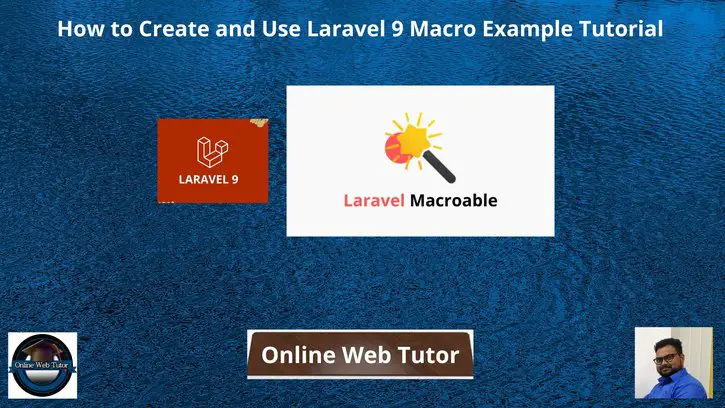Inside this article we will see the concept i.e How to Create and Use Laravel 9 Macro Example Tutorial. Article contains the classified information about Laravel Macros – Extending Laravel’s Core Classes.
If you are looking for a solution i.e What are Laravel Macros and How to Extend then this article will help you a lot for this. Tutorial is super easy to understand and implement it in your code as well.
Laravel Macros are a great way of extending Laravel’s core classes and add extra functionality required for your application.
Read More: Laravel 9 How to get Random Database Records Tutorial
Let’s get started.
Laravel Installation
Open terminal and run this command to create a laravel project.
composer create-project laravel/laravel myblogIt will create a project folder with name myblog inside your local system.
To start the development server of laravel –
php artisan serveURL: http://127.0.0.1:8000
Assuming laravel already installed inside your system.
What is Laravel Macro?
In simple word, Laravel Macro is a way to add some missing functionality to Laravel’s internal component with a piece of code which doesn’t exist in the Laravel class.
To implement a Laravel Macro, Laravel provides a PHP trait called Macroable.
We can check for example Response class of Laravel locating at Illuminate\Http\Response which implements the Macroable trait, which means you can extend the Response class using a Macro.
Macroable Laravel’s Classes
The following classes of Laravel allow for macros to be created by using the Illuminate\Support\Traits\Macroable trait.
Read More: CodeIgniter 4 Call Spark Command From Controller Tutorial
Here are some of the most commonly used classes to create macros.
- Request: Illuminate\Http\Request
- Response: Illuminate\Http\Response
- Collection: Illuminate\Support\Collection
- Str: Illuminate\Support\Str
- Router: Illuminate\Routing\Router
- UrlGenerator: Illuminate\Routing\UrlGenerator
- Cache: Illuminate\Cache\Repository
- Filesystem: Illuminate\Filesystem\Filesystem
- Arr: Illuminate\Support\Arr
- Rule: Illuminate\Validation\Rule
Create a Laravel Macro
Before creating a Laravel Macro, we have to make sure our targeted class use the Macroable trait. Here we will be create a macro on Illuminate\Support\Str class which will check the length of a given string named isLength.
Register a Macro
Open AppServiceProvider.php from /app/Providers folder. Register macro using boot() method of it.
<?php
namespace App\Providers;
use Illuminate\Support\ServiceProvider;
use Illuminate\Support\Str;
class AppServiceProvider extends ServiceProvider
{
/**
* Register any application services.
*
* @return void
*/
public function register()
{
}
/**
* Bootstrap any application services.
*
* @return void
*/
public function boot()
{
Str::macro('isLength', function ($str, $length) {
return static::length($str) == $length ? 'String Length is ' . $length : 'String length is not ' . $length;
});
}
}
Create Route
Open web.php file from /routes folder. Add this route into it.
//...
use Illuminate\Support\Str;
Route::get('route-1', function () {
dd(Str::isLength('This is a Laravel Macro', 24));
});
Route::get('route-2', function () {
dd(Str::isLength('Welcome To Online Web Tutor', 27));
});
//...
Application Testing
Run this command into project terminal to start development server,
php artisan serveURL: http://127.0.0.1:8000/route-1
Read More: CodeIgniter 4 Call Spark Command From Closure Routes
Output
"String length is not 24"URL: http://127.0.0.1:8000/route-2
Output
"String Length is 27"We hope this article helped you to learn How to Create and Use Laravel 9 Macro Example Tutorial in a very detailed way.
Online Web Tutor invites you to try Skillshike! Learn CakePHP, Laravel, CodeIgniter, Node Js, MySQL, Authentication, RESTful Web Services, etc into a depth level. Master the Coding Skills to Become an Expert in PHP Web Development. So, Search your favourite course and enroll now.
If you liked this article, then please subscribe to our YouTube Channel for PHP & it’s framework, WordPress, Node Js video tutorials. You can also find us on Twitter and Facebook.
